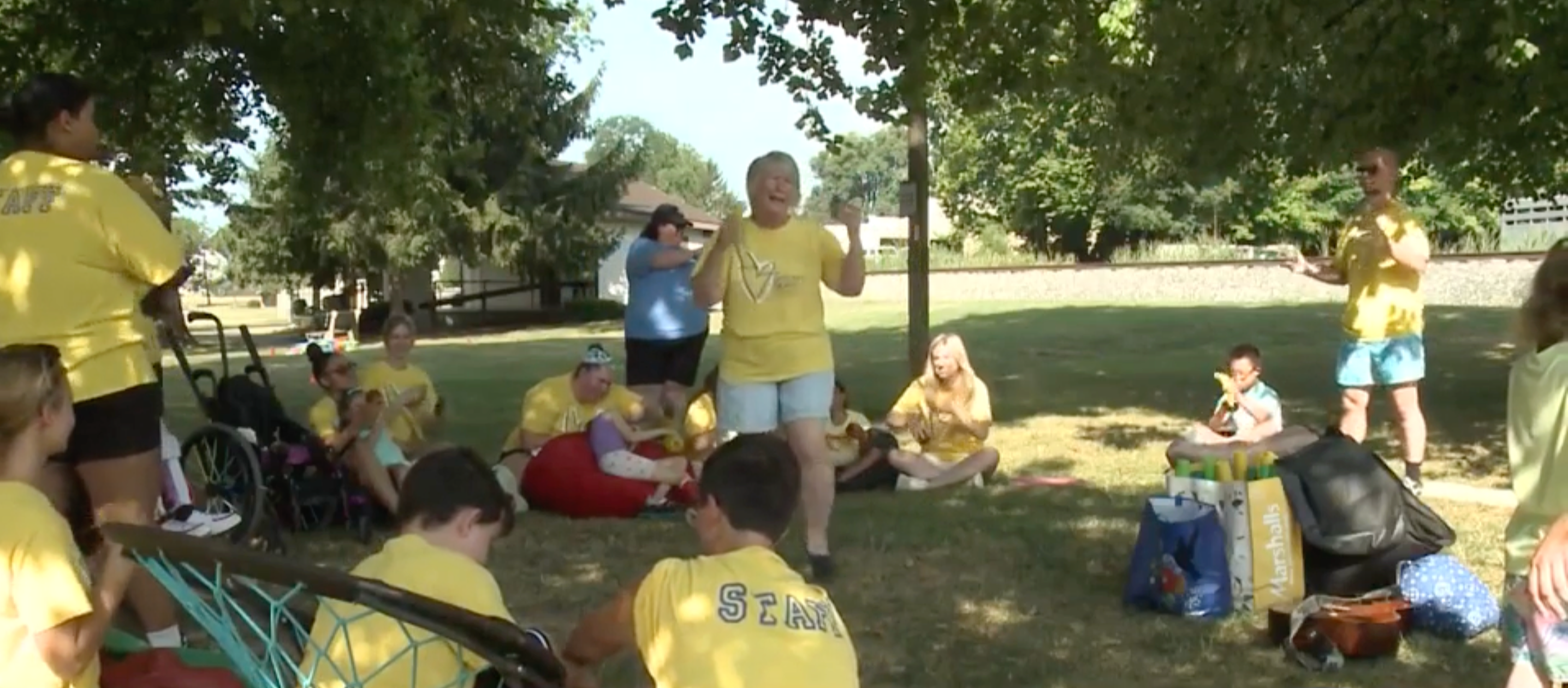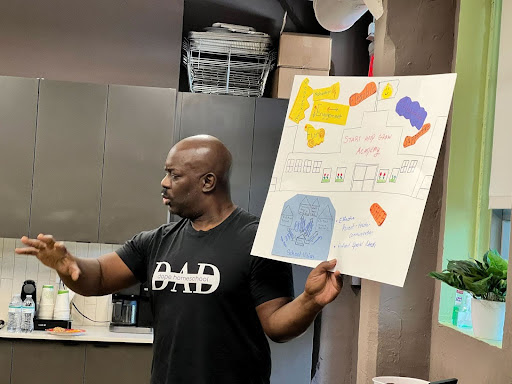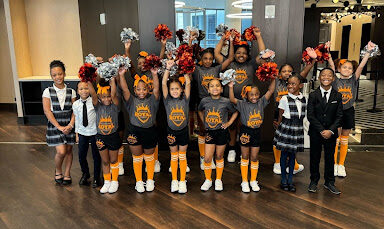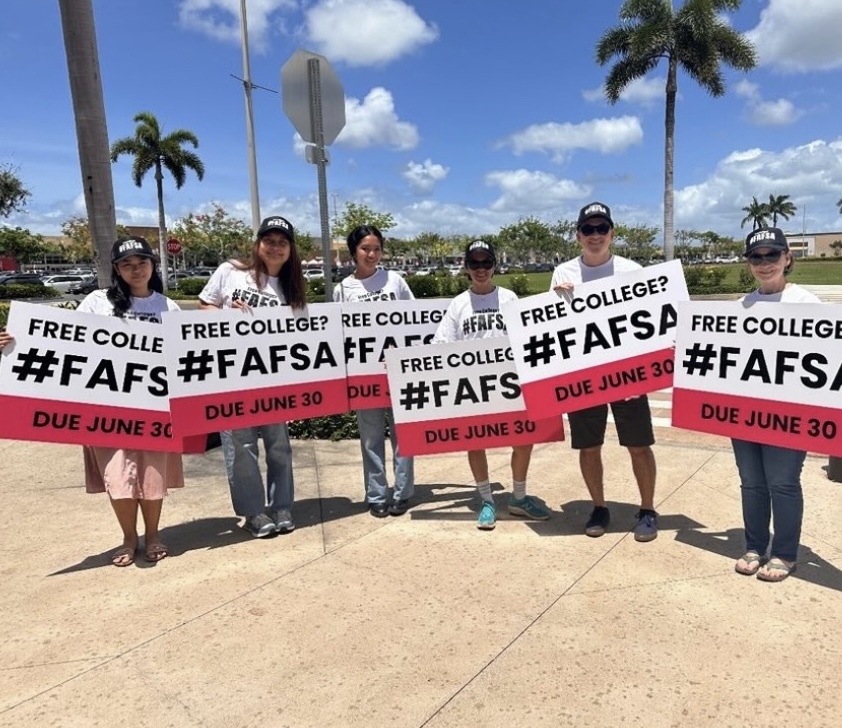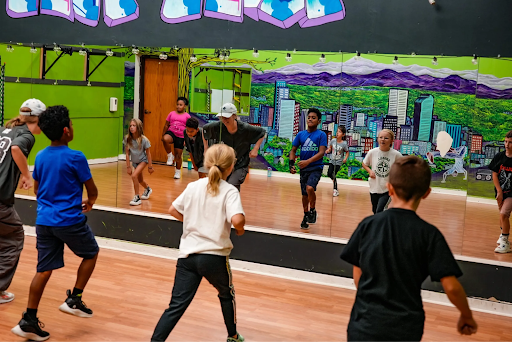Jump to: Top Tasks | From the Field | Key Resources | Moments of Resilience
It is week 190 in our new reality and we are thinking about how much students lost during the pandemic and how important it is to keep pushing forward with new ways to catch them back up.
“The evidence is now in, and it is startling,” writes The New York Times editorial board in a very long-delayed but still welcomed editorial on Saturday. “The school closures that took 50 million children out of classrooms at the start of the pandemic may prove to be the most damaging disruption in the history of American education. It also set student progress in math and reading back by two decades and widened the achievement gap that separates poor and wealthy children … This is a bipartisan issue, and parents, teachers and leaders in education have a role to play as well, in making sure that addressing learning loss and other persistent challenges facing children receives urgent attention.”
SUBSCRIBE
We need to empower teachers, parents and students with every tool we can. That means investing in the kind of R&D far too often lacking in American education. One way to do so is by continuing to experiment with AI, which has evolved so much since we first looked at ChatGPT seven months ago. While drama around the governance of industry leader OpenAI is getting the headlines right now, there is no denying the potential of the products emerging at the intersection of AI and education.
“The nonprofit Khan Academy is making strategic decisions to shore up its position at the forefront of the use of artificial intelligence in K-12 education,” writes Alyson Klein in a new article for Education Week. “One move it’s making—announced Nov. 15—is to cut the price almost in half for use of Khanmigo, its AI-powered chatbot that is currently being used in 32 school districts. The cost of Khanmigo, which gives students and teachers the opportunity to interact with an AI-powered personalized tutor and lesson-planning collaborator, will drop from $60 to $35 per student annually.”
At the same time, the tool is about to get a lot smarter: “Beginning later this month, students will be able to submit a draft essay to Khanmigo, which will then guide them through a revision process. Students will get feedback on their essay’s structure and organization, how well their arguments are supported, and the essay’s overall tone and style … Eventually, Khanmigo will be programmed to give teachers feedback on what parts of the writing process their students could use extra instruction in.”
It’s a good example of the fast moving nature of AI and education, and the wisdom of John Bailey’s advice in our interview back in March of this year: “The only way to really understand this technology is to use it.” If you want to use it, you can find out a lot more on the Khan Academy’s Labs page.
AI is also the topic of discussion on EdSurge’s podcast, where researchers are warning that our current approach to AI in education is too parochial and short-sighted. And the Fordham Institute has published a series of essays on AI and is holding a competition where participants will vote on the “wisest wonk.”
Last week, we celebrated the launch of Louisiana Kids Matter and Accelerate’s Louisiana’s statewide tutoring effort and looked at what’s behind the explosive growth of homeschooling programs. Today, we turn to the lingering and expansive student attendance crisis and dive into what science tells us about community organizing as a core advocacy strategy.
TOP TASKS
Get our children back in school
In April of 2020, with the nation reeling from the virility of Covid-19, we shared an early report from the Los Angeles Times on the shocking number of children who went missing in the transition to online learning and implored the education system to “find the lost children.” That journalism prompted other outlets, including the New York Times, to examine the state of attendance in other districts as the nation moved to a virtual learning environment. “Some school systems, like the District of Columbia Public Schools, have stopped taking formal attendance altogether,” Dana Goldstein and others wrote for the Times. “The nation’s largest school district, New York City, which is at the center of the coronavirus crisis, has not yet released data on the number of children participating in online learning.”

What was worrying then has become much clearer now: these norms of attendance, once broken, are extremely hard to repair. “In Washington DC’s public high schools, about two-thirds of all students last year were chronically absent (missed 10%+ of all school days). About a third were profoundly chronically absent (missed 30%+ of all school days,)” writes Kevin Drum. “In California, chronic absenteeism for all kids at all grade levels has tripled since the start of the pandemic.”
In the New York Times, education reporter Sarah Mervosh notes that absenteeism is particularly pronounced in schools serving low-income families: “Nearly 70 percent of the highest poverty schools experienced widespread, chronic absenteeism in the 2021-22 school year, compared with 25 percent before the pandemic.”
What can we do now to address this problem?
AttendanceWorks, an organization that has been on the frontlines of working with districts to tackle the absenteeism problem, suggests that the absenteeism has its source in four root causes:
- Barriers at home, including parental sickness or responsibilities for siblings,
- Disengagement at school, including boredom or a lack of growth,
- Aversion, including social and peer challenges, and
- Misconceptions about the importance of attendance.
The organization also provides a policy map for advocates and state lawmakers with 14 ways to address the crisis.
THE TASK OF THE WEEK IS
Bring successful tactics into your campaigns
Last week, 50CAN, in partnership with FutureEd at Georgetown University, hosted a webinar on what it takes to be successful in community organizing efforts. The topic is one that clearly stirs passion, with the webinar drawing the largest number of attendees since we began this series in 2020.
The event featured a presentation from Marc Porter Magee on what we can learn from the best research on organizing as well as a discussion with community organizers across the 50CAN network and our partners–including TransformEducation Now’s Anita Banuelos, the National Parent Union’s Jason Allen and ConnCAN’s Luis Ortiz–as they reflected on their own organizing in light of the lessons uncovered through research.
“The new AdvocacyLabs report is absolutely amazing and every organizer should read it,” Anita Banuelos shared. Great organizing “isn’t just enabling parents to come to the forefront and express their views, but it also builds their skills and brings other parents along with them.”
THE TASK OF THE WEEK IS
FROM THE FIELD
TennesseeCAN Executive Director Victor Evans contributed an op-ed in the Tennessean where he celebrates the Volunteer State’s nation-leading progress while calling on elected officials that the time is now to expand ESAs.
Building on the last three years of parent organizing, HawaiiKidsCAN is changing the game this year by equipping 100 students and their families with high-quality home academic assessments, powered by Let’s Go Learn. The project will ensure families have real-time academic data at their fingertips, with detailed academic reports. Participating families will join a community of practice where they can talk through their data, win prizes for engagement and grow collective parent voice. HawaiiKidsCAN is leading this work thanks to being selected for a highly competitive national Thrive Grant. The team is also currently raising funds to send their student advocates to Ireland next year to elevate global youth advocacy for transforming education, the next step in a multi-year partnership with Cooperation Ireland.
GeorgiaCAN’s parent fellows hosted a screening of the “Right to Read,” a documentary focused on the science of reading, for parents in Savannah, Georgia.
Meanwhile in the Garden State, JerseyCAN continues to spark the public’s interest in the science of reading. Executive Director Paula White participated in a panel discussion at Rutgers University-Newark in late October where she shared insights about the imperative of structured literacy. Weeks earlier, she testified before the State Board of Education urging the Board to take action on new science of reading-focused English Language Arts standards proposed earlier this year, leading to their successful passage earlier this month.
Transform Education Now’s Anita Banuelos held an advocacy workshop with parents of students with special needs to hear the changes they want to see to Colorado’s education system and to arm them with key advocacy skills to support their children.
NewMexicoKidsCAN’s Amanda Aragon is working with partners across the district on the search for Albuquerque’s next superintendent, with a story in the Journal highlighting the effort.
50CAN President Derrell Bradford appeared on Dave Hardy’s School Choice Report to talk about the state of the education reform movement. “We have to get back in the habit of managing our differences so that we can improve what we share,” Derrell noted.
Key Resources
AEI’s Rick Hess interviews Matt Kramer, CEO of Wildflower Schools. The innovative network of micro-Montessori schools is aiming to grow to meet the growing demand for options from families.
The latest podcast release from Sarah Koenig’s Serial and The New York Times focuses on the criminalization of children in one district in Tennessee.
A report by the Urban Institute finds that federal expenditures on children are falling. It reached a high of $11,360 per child in 2021 before dropping to $9,910 in 2022 and is projected to drop to $7,820 by 2024.
Brookings Institution finds an increasing divergence between the grades teachers assign to students and how those students perform on standardized tests, suggesting that parents shouldn’t trust that an A or B grade means students mastered the material.
New America takes a closer look at intermediary organizations that play a big role in the growing work-based learning ecosystem.
Moment of Resilience
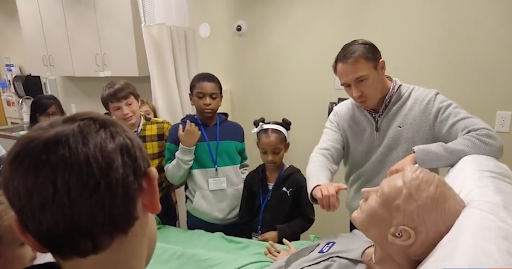
Gifted and talented students in Maryland work with a doctor at Salisbury University’s Henson Medical Simulation Center, as they learn how to diagnose symptoms and track the vitals of a robotic mannequin. It is one of the opportunities provided through the district’s “Thinking and Doing” program. “I never really thought of the medical field,” said fifth grader Mustafa Qaiser, “But now I’m actually starting to think about it.” It’s the kind of eye-opening experience that we are aiming for all children to have in the education system of the future.


